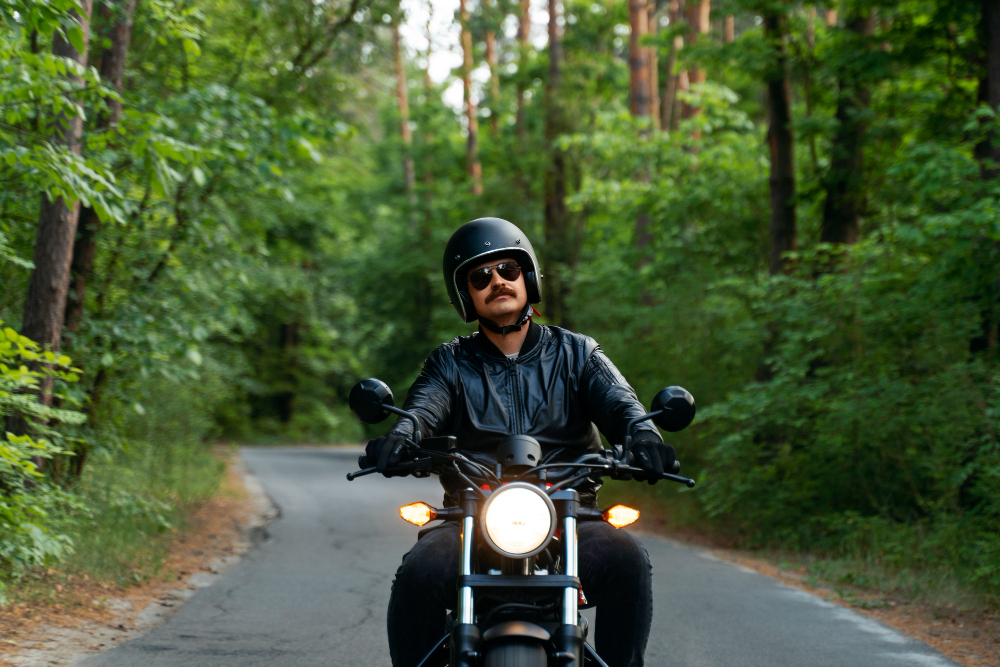Driving a motorcycle requires attention to certain responsibilities and difficulties that only an experienced rider would understand. Understanding and being able to use basic skills is very important for every motorcyclist to keep everyone nearby safe. We explore the essentials for any motorcyclist such as the right way to use safety gear and advance your riding techniques. Even if you haven’t ridden much, practicing the good riding habits can improve your experience and allow you to feel confident in all kinds of conditions. It is very important to learn these skills to make sure all motorcyclists stay safe and enjoy the ride.

Riding safely, efficiently and enjoying yourself is much easier if you have good riding habits, no matter how experienced you are. In this article, we look at riding habits that motorcyclist should understand to enjoy their rides more.
10 Good Riding Habits That Make You a Better Motorcyclist
Learn the most important riding habits every motorcyclist should use to stay safe, get better at riding and have more confidence on the road.
Safety First
- Using Personal Safeguards: Every motorcyclist should always put safety first. Always use a helmet that follows safety guidelines, plus gloves, a jacket and pants for protection. It’s very important to use reflective gear if you plan to ride outside after dark or in dim light.
- Keeping the Equipment Up to Date: Before you ride, check that your motorbike is functioning well. Don’t forget to check the tire pressure, brakes, lights and fluid regularly. Proper care for your bike prevents most mechanical problems during your ride.
Defensive Riding
- Paying Attention to What’s Happening: You should make sure to watch your environment at all times. Be sure to check what’s ahead of you and what’s happening behind you. Be ready for what people in cars, on bikes and on foot might do. Look into your mirrors and check your shoulders before you change lanes or make a turn.
- Maintain Distance from Other Vehicles: Don’t get too close to the car ahead of you. Because of this, you can avoid problems if traffic suddenly stops or changes. The three-second rule is helpful, yet extend it in pouring rain, a snowfall or dangerous clouds.
Navigating Traffic
- Show Your Intend: It’s important to show others what you intend to do before you do it. Whenever you’re turning, changing lanes or braking, talking clearly with others on the road helps everyone stay safe.
- Driving Lane: Pick a lane so that you are easy for other drivers to see and can also spot obstacles up ahead. Try not to stay in an area where you can’t be seen by a driver.
Traffic and Road Surfaces
- Be Flexible Weather: Changing weather requires a different approach to your rides. If it is rainy, keep your speed down, increase how much space you leave between cars and steer clear of puddles that might hide potholes. If the fog is low, turn on your low-beam headlights and keep to a gentle speed.
- Keeping an Eye on Road Changes: Observe the material of the road in front of you. If the ground is wet, covered in gravel or not even, it will change how your vehicle handles. Modify how you handle your bike to stay in charge.
Getting a Scooter with Company
- The Do’s and Don’ts of Riding as a Group: Be sure to keep the same speed and direction when you ride as a group. Waving your arm at other motorcyclists helps you communicate and staying in line will make it easier for other road users to expect your actions.
- Overcoming Other Drivers: If you are overtaking a fellow rider, do it to their left and allow plenty of room before going back into your lane. Never just step off your motorcycle without looking for upcoming traffic and allowing others to pass.
Managing Fuel and Break Times
- Keep an Eye on Your Tank: Check how much fuel you have left regularly and plan your journey so you won’t run out before reaching a station. If your car runs out of fuel in a remote area, it can be dangerous.
- Frequently Step Away: Taking long drives can make you feel tired which reduces your reaction speed and decision ability. You should regularly break from your work for a bit of exercise, refreshment and rest. You will ride more cautiously and take pleasure from your ride.
Legal Compliance
- Understand the Law: Take some time to learn the traffic rules where you live. The rules cover how fast cars and bikes should travel, the use of helmets and bike lane use. Following the law serves to keep you safe and also helps you show others the right way to act.
- Med Bridge and Insurance: See to it that you’re well insured and have all the licenses in order. There are areas where licenses depend on the type of motorcycle you drive and insurance is advised in case you get in an accident.
Emergency Preparedness
- Be Sure to Bring These Things: Make sure to have a basic toolset, a spare tire and a first aid kit with you all the time. Navigating and getting help in emergencies is easier when your battery is charged on your smartphone.
- Learn Emergency Response Skills: Get familiar with emergency actions such as fast stops and sudden swerves, somewhere safe. If you know how to act during an emergency on your bike, you can avoid accidents.
Health and Wellbeing
- Don’t Overeat: Biking is not always easy, so it helps to stay fit. Training your heart, strengthening your body and stretching can increase your riding comfort and help you stay on the horse longer.
- Drink Water and Eat Well: Drink water and snack on healthy products during your journey. A lack of water and tiredness can prevent you from riding with safety in mind.
The Way You Think and Feel
- Remain Calm and Pay Attention: Riding a motorcycle means you must focus on what you are doing. Keep a calm state, no matter the difficulty and remember the route you need to take. Turn off your mobile phone when it’s time to study.
- Always Learning: The more you bike, the better you will get at it. Benefit from training courses, read relevant books and watch instructional videos to learn what to do to stay safe.
Conclusion
All things considered, improving basic riding habits helps every motorcyclist stay safe and satisfied on the road. If you have a clear understanding of traffic laws and stay aware of what’s happening around you, you’re much less likely to get into an accident.
Riders who frequently practice defensive habits like scanning the environment and maintaining a safe distance usually anticipate difficulties on the road.
Learning and practicing regularly is as important as riding, so both professionals and learners keep improving their skills. If motorcyclists focus on these habits regularly, they keep themselves safe and ride more enjoyably and fully in control every time they ride.


